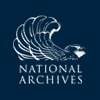Thomas Jefferson to Albert Gallatin, 11 October 1805
To Albert Gallatin
Oct. 11. 05.
Th:J. to mr Gallatin
The reasons of the bank against importing coin seem good under their views of the subject, which perhaps are not broad enough.
I think Congress should renew the tender of foreign coins. but whether any alteration in the comparative value of Spanish gold should be made admits of question. I imagine Colo. Hamilton had assays made whereon he founded his rates of foreign coins. indeed I think I recollect his having stated in some of his reports the particulars of his assays. I am almost certain mr Rittenhouse on some occasion reported assays to Congress. their result I presume was agreeable to what the law established. the assay by the bank on two single pieces is on much too small a scale to shake the legal establishment. they should be made on large masses, and by persons known to us. if the assay of the bank be sufficient to excite any suspicion it would be better to instruct mr Patterson to have a sufficient assay made on a mass of Spanish gold & to report on the subject. if there be not considerable error in the present rate I should be against touching it. the merchants will soon learn to correct small errors in what they recieve in foreign countries, & for interior circulation a small error is unimportant. it is like the case of worn silver or gold. Affectionate salutations.
RC (NHi: Gallatin Papers); addressed: “The Secretary of the Treasury.” PoC (DLC). Notation in SJL: “coins.”
Gallatin wrote to Robert Patterson on 11 Oct. regarding the quality of Spanish gold coins (see Gallatin to TJ, 9 Oct., first document). Patterson replied on the 19th and provided results from recent assays conducted by the Mint, which showed that Spanish gold “may be truly rated” at about 21 karats fine. Bank officers and others in Philadelphia informed Patterson that foreign gold coins had largely disappeared from circulation. In his opinion, banks would not wish to see the law making them legal tender revived (, 11:641-2). On 10 Apr. 1806, Congress passed “An Act regulating the currency of foreign coins in the United States,” which again made foreign gold and silver coins legal tender in the United States at the same rates fixed in the 1793 act regulating foreign coins. The secretary of the Treasury was to conduct annual assays of foreign coins and report the results to Congress so that changes in value could be made if necessary (, 1:300-1; 2:374-5).

![University of Virginia Press [link will open in a new window] University of Virginia Press](/lib/media/rotunda-white-on-blue.png)
